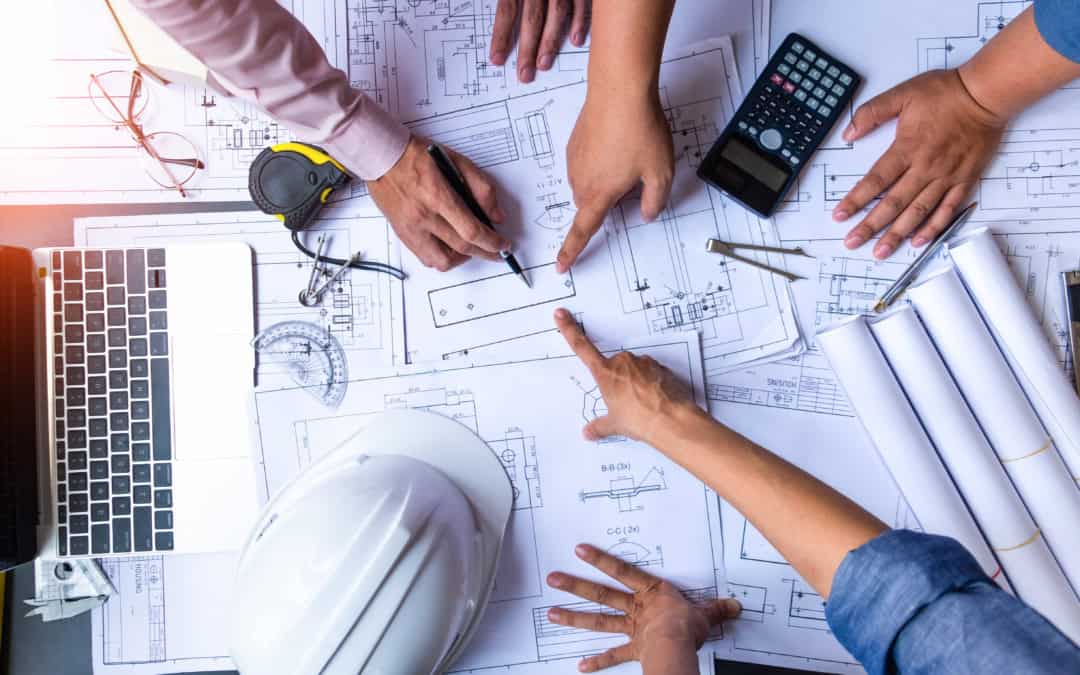How the Hybrid Remote Workforce Has Changed Office Design and Furniture
Most people with office jobs got significant exposure to work-from-home life during the pandemic. For many, returning to the office five days a week became a non-starter; many business’ top talent opted to change jobs rather than give up the ability to work from home part-time. However, an office is a must for most businesses—and what good is an empty office? How do companies get people back into the office if employees prefer to work from home? Management either sets in-office work days as a requirement or finds ways to adapt the office to entice workers back in.
One of the most significant office adaptations is the conceptual shift from the office as somewhere employees have to go to somewhere they want to go. Companies are luring employees back into the office by making the office a desirable destination. This is one of the most significant trends in modern office design, fueled by the hybrid remote workforce. Read on to explore the idea of an office as a destination, what that idea looks like, and why this new concept is so important.
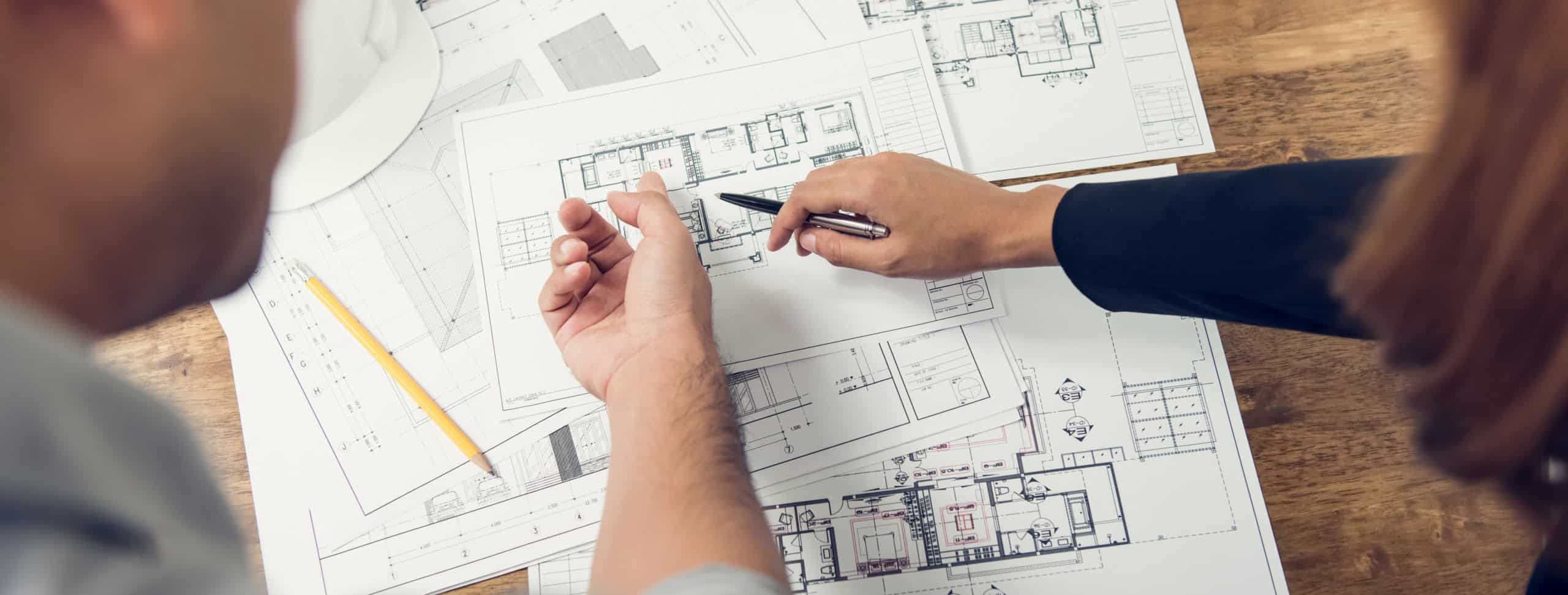
Why is the office so important?
Offices are important for several reasons. An office is a must-have asset for some businesses, as not all work can be done from home and not all employees can work from home. Many people prefer to work in an office because working at home is too distracting. The office serves other important purposes, notably as a hub where coworkers collaborate and connect. Collaboration fosters innovation as well as camaraderie among team members.
What does it mean for an office to be a “destination?”
Simply, it means that the office is somewhere employees want to be. Ultimately, they choose to work there even if they are not required to do so. For an office to truly be seen as a destination, employees are looking for employers to offer trendy office design and furniture features like:
- Comfortable workstations and meeting places
- Social zones to help people relax and build better workplace community
- Quiet and distraction-free workspaces
- Amenities like snacks, drinks, and easy access to quality food, gyms, and more
- Flexible spaces that promote activity-based working
- Inviting decor and ambiance
- Modern integrated technology and fast internet
- A variety of different workspace options
- Plenty of places to huddle and collaborate with coworkers
- Convenient location
- Focus on employee well-being

What are the benefits of making the office a destination?
Attracting and Retaining Top Talent
In competitive job markets, attracting and retaining top talent is a challenge. Having a destination-level office can go a long way toward luring the best and the brightest.
Inspiring Innovation and Creativity
In today’s competitive landscape, companies thrive with workspaces that ignite creativity and innovation. By cultivating environments that encourage teamwork and brainstorming, businesses can unlock a culture where groundbreaking ideas and solutions flourish.
Enhancing Productivity
Destination offices design workspace with a variety of areas that cater to different work styles. The idea is to offer quiet zones for focused tasks and collaborative spaces for brainstorming. When employees feel that their needs are met, their productivity and engagement tend to improve.
Establishing Company Culture
A space that embodies your company’s values and mission is important. Efforts to build company culture foster a sense of belonging and pride in employees, strengthening their connection to the company and its purpose.
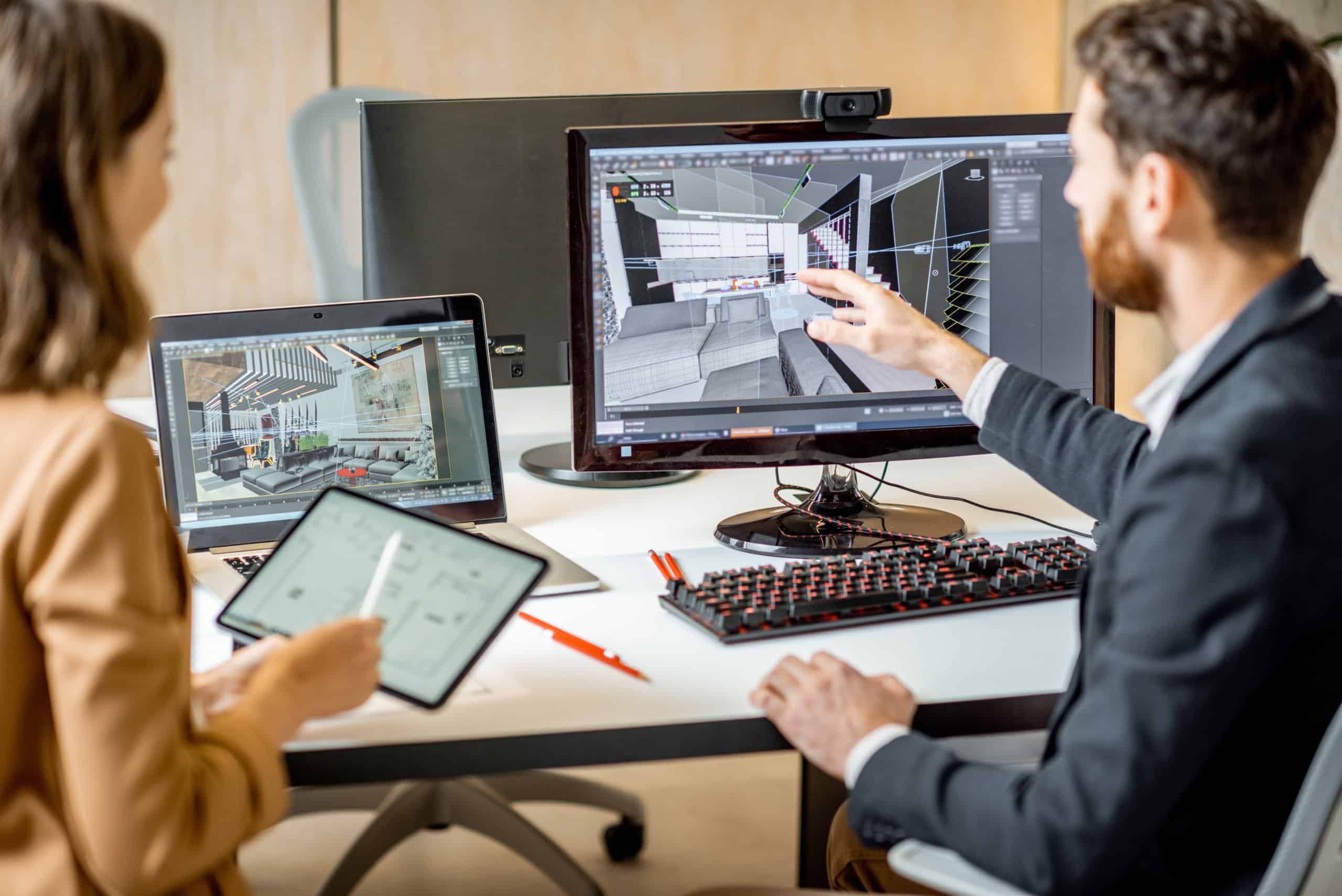
How to turn your office into a destination
If your goal is to make your office more destination-like, there are several recommendations to help you get there. The process typically involves at least a minor office redesign effort. Note that if the hybrid remote model has resulted in extra space, you may need to downsize the office. If that’s the case, be sure to partner with an office design and furniture consultant to ensure that you have the professional guidance you need to make the redesign project successful.
Embrace Resimercial Design and Furniture Elements
Resimercial design in an office environment aims to bridge the gap between residential comfort and commercial functionality. Imagine a living room feel in the office; employees can sit and chat on a plush couch while they enjoy a coffee and collaborate on work projects. That’s the goal of resimercial design and furniture.
Embrace Comfort and Flexibility:
- Furniture Mix: Include ergonomic workstations, plush armchairs, and high-top collaboration tables.
- Soft Touches: Incorporate soft textures and warm materials with rugs, throw pillows, and wooden furniture accents to create a more inviting atmosphere.
Homey Touches:
- Natural Light and Plants: Maximize natural light and incorporate greenery throughout the office to create a calming and biophilic environment.
- Warm Lighting: Move away from harsh overhead lights. Opt for warm, adjustable lighting to mimic a homey feel and cater to individual preferences.
- Art and Decoration: Accentuate office space with artwork, photographs, or plants that reflect your company culture and create a visually interesting atmosphere.
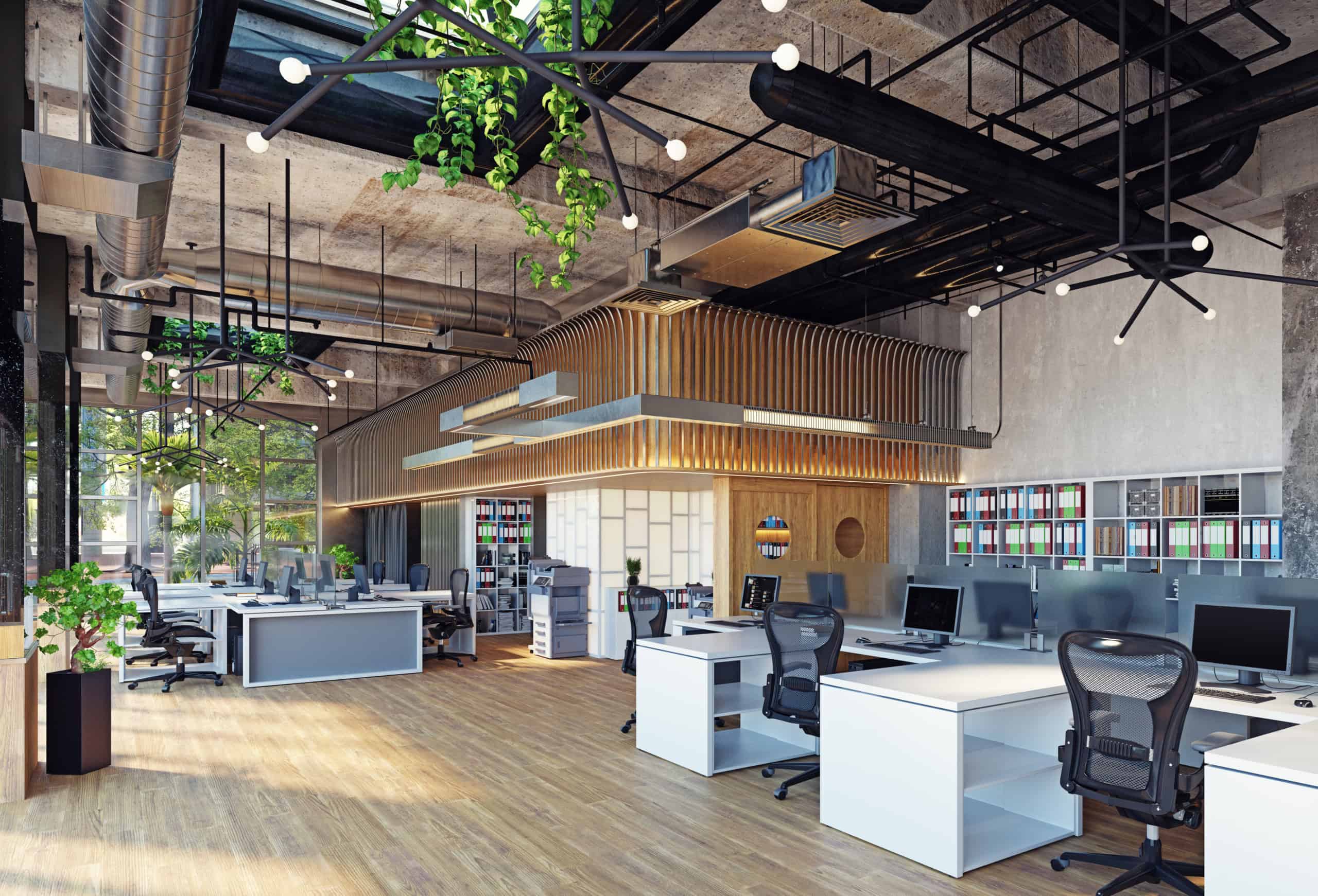
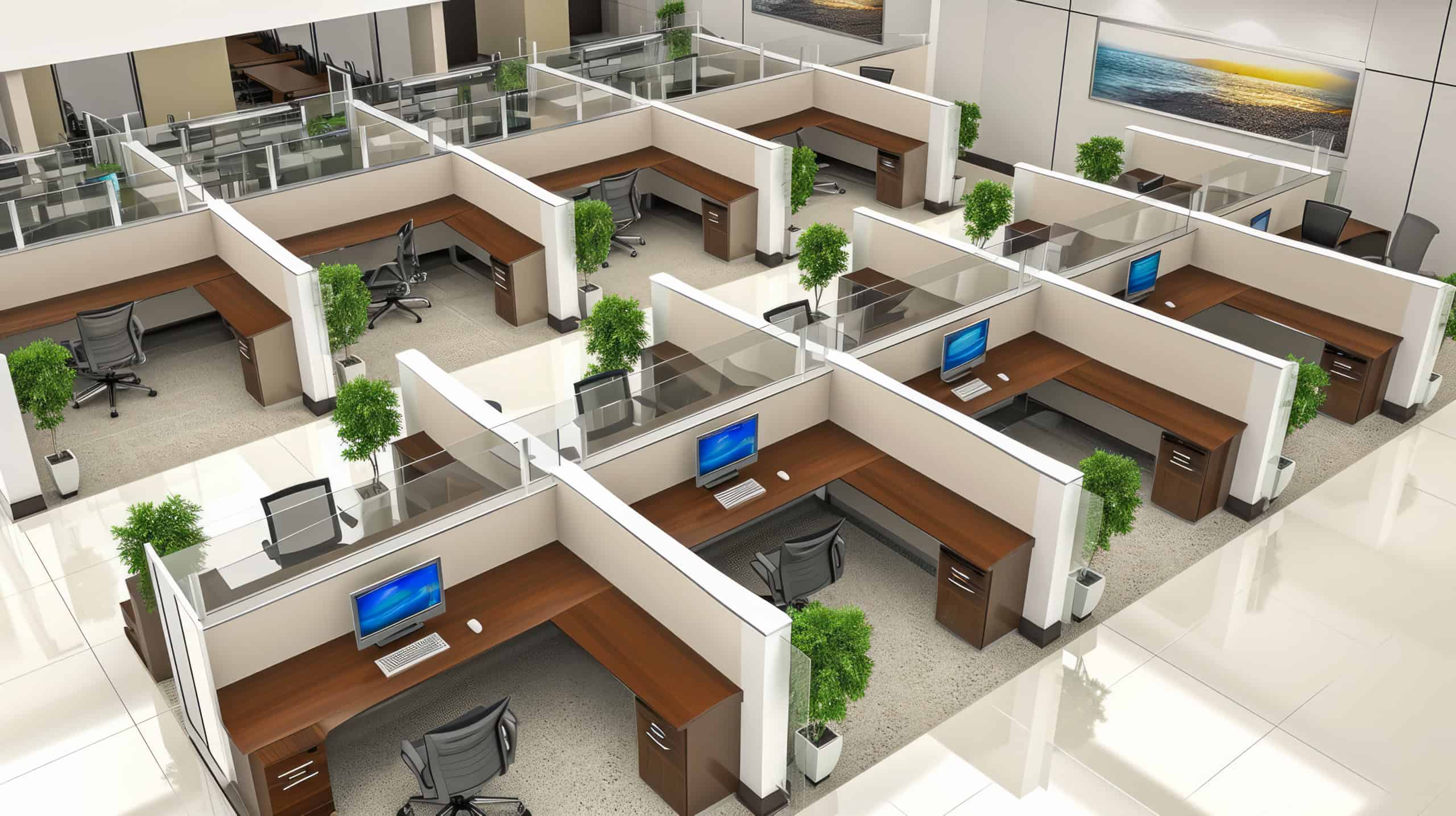
Incorporate Flexibility
Top talent wants flexibility, a concept that can be discussed in two different topics: flexible workspaces and flexible work policies.
Workspace Flexibility:
- Modular Furniture: Evolving workplace habits have made fixed furniture less likely to meet an office’s dynamic needs. Modular furniture that can be easily rearranged to suit individual or team needs is more flexible. Think standing desks, mobile whiteboards, and modular workstations.
- Variety of Zones: Consider zones for different work activities (focus, collaboration, socialization, privacy).
- Hot Desking: Consider a hot desking system where employees reserve desks based on their daily needs. This practice optimizes space utilization and allows for more flexibility in choosing a work environment.
Work Policy Flexibility:
- Remote Work Options: Offer remote work opportunities if possible. When employees are allowed to work from home or a co-working space on designated days, a healthy work-life balance is promoted and a wider talent pool attracted.
- Flexible Hours: Consider flexible work schedules that cater to individual needs and preferences. This perk allows early risers or people with after-work commitments to adjust their work hours for optimal productivity.
- Compressed Workweeks: Explore compressed workweeks, where employees work longer hours for fewer days. This schedule offers employees additional free time but maintains productivity.
- Focus on Outcomes: Shift the focus from time spent in the office to results achieved. This philosophy empowers employees to manage their time effectively and work from locations that maximize their productivity.
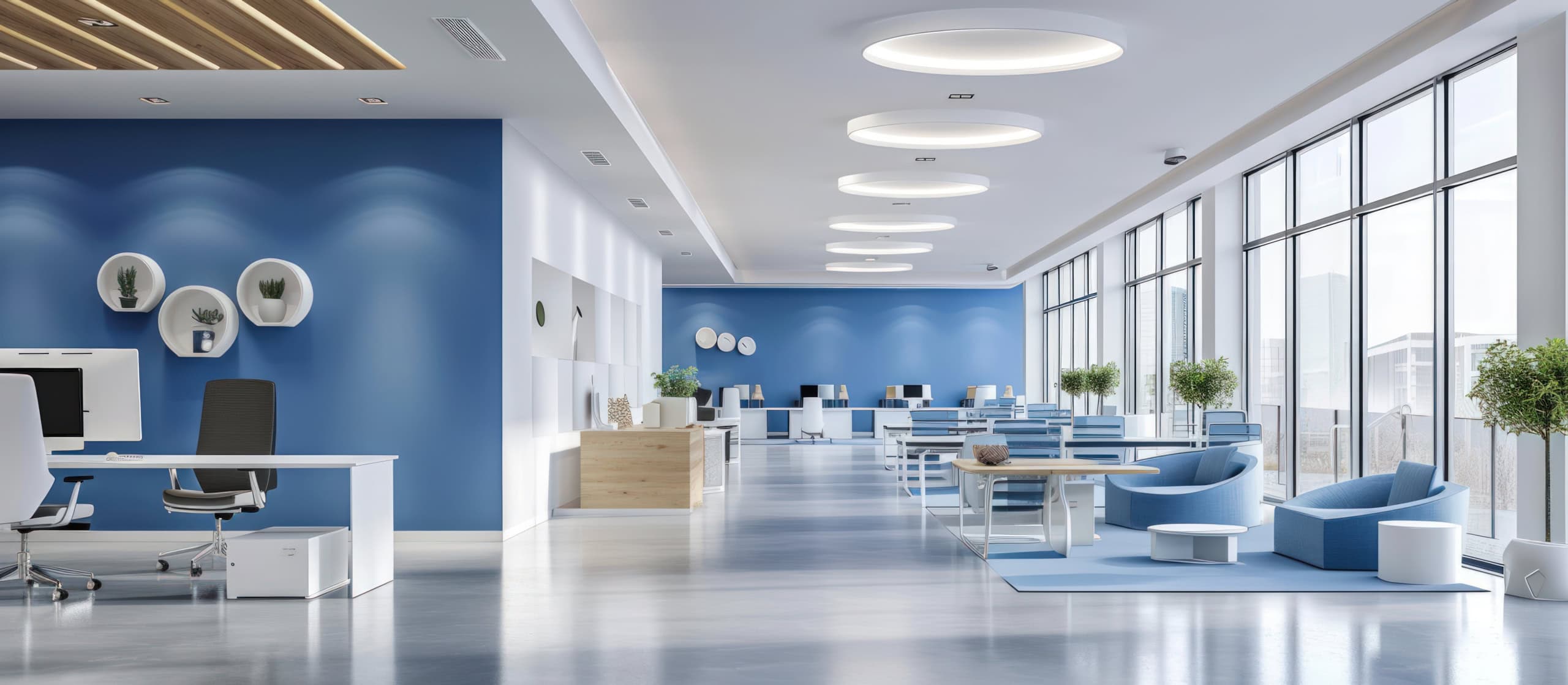
Create Activity-Based Zones
In discussions of offices designed as destinations for the hybrid remote workforce, the assumption is that no one is talking about the old methods: dedicated cubicle workstations for every employee or a typical open office layout. The modern office is built around activity-based zones that provide a variety of seating options suitable for the varying tasks and responsibilities employees must accomplish during the workday.
Zones for Different Needs:
- Focus Zones: Create quiet areas with sound-absorbing materials and comfortable seating for concentrated work.
- Collaboration Hubs: Designate spaces with comfortable seating arrangements and whiteboards or projector screens to encourage brainstorming and teamwork.
- Social Spaces: Establish break areas with couches, coffee tables, and maybe even a game area to foster relaxation and interaction among colleagues.
- Privacy: Provide privacy booths where employees can hop on a conference call, take a private phone call, or have a one-on-one huddle.
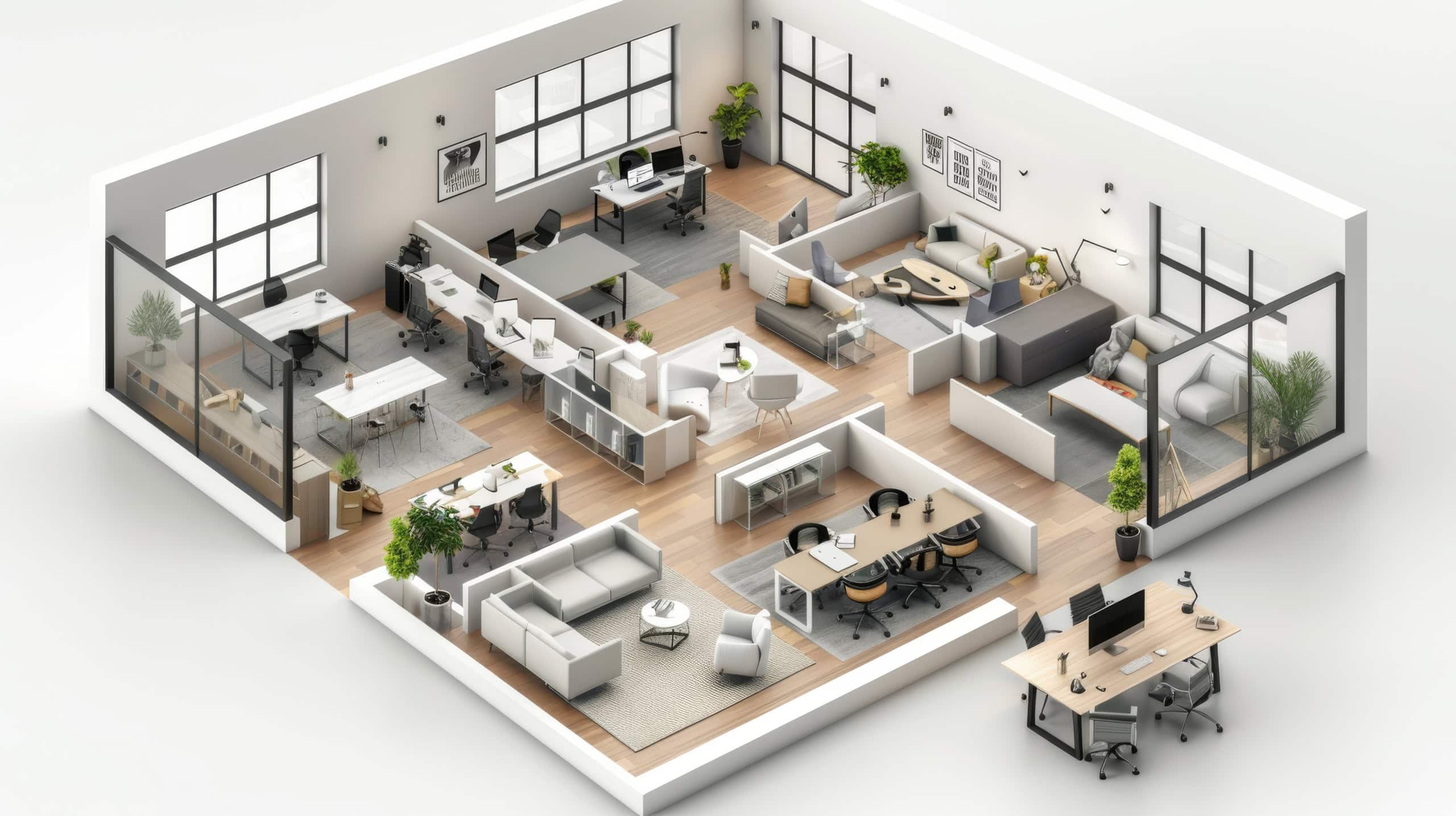
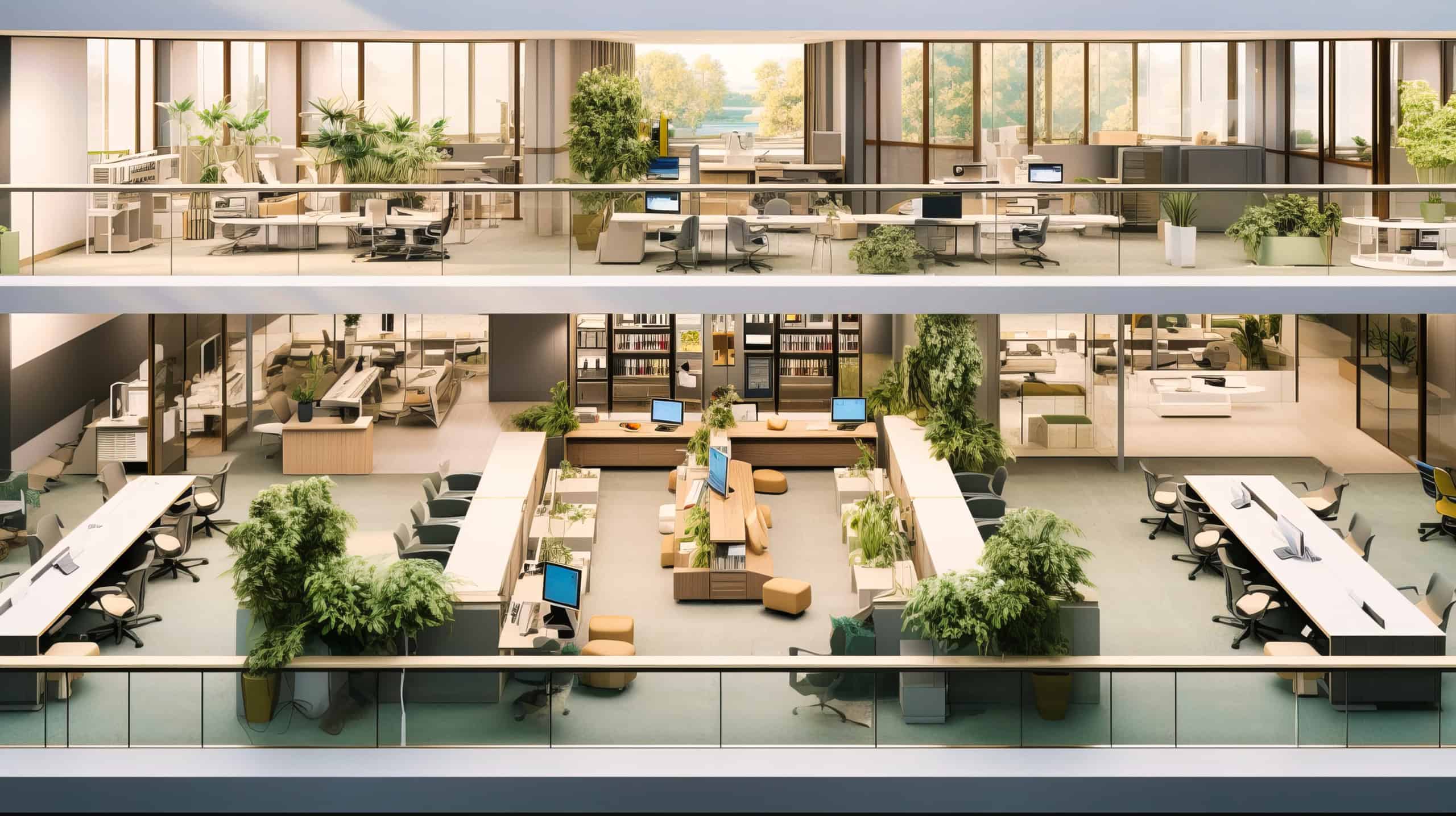
Turn Your Cafeteria Space into a Loungy Hub
A comfy modern cafeteria space is a key element of a destination office. Today, cafeterias are relied upon to serve multiple purposes. They are office attractions rather than just a place to eat lunch. When they incorporate more comfortable furniture and modern aesthetics, cafeterias can quickly become social hubs, places to collaborate, or places to sit and do some work.
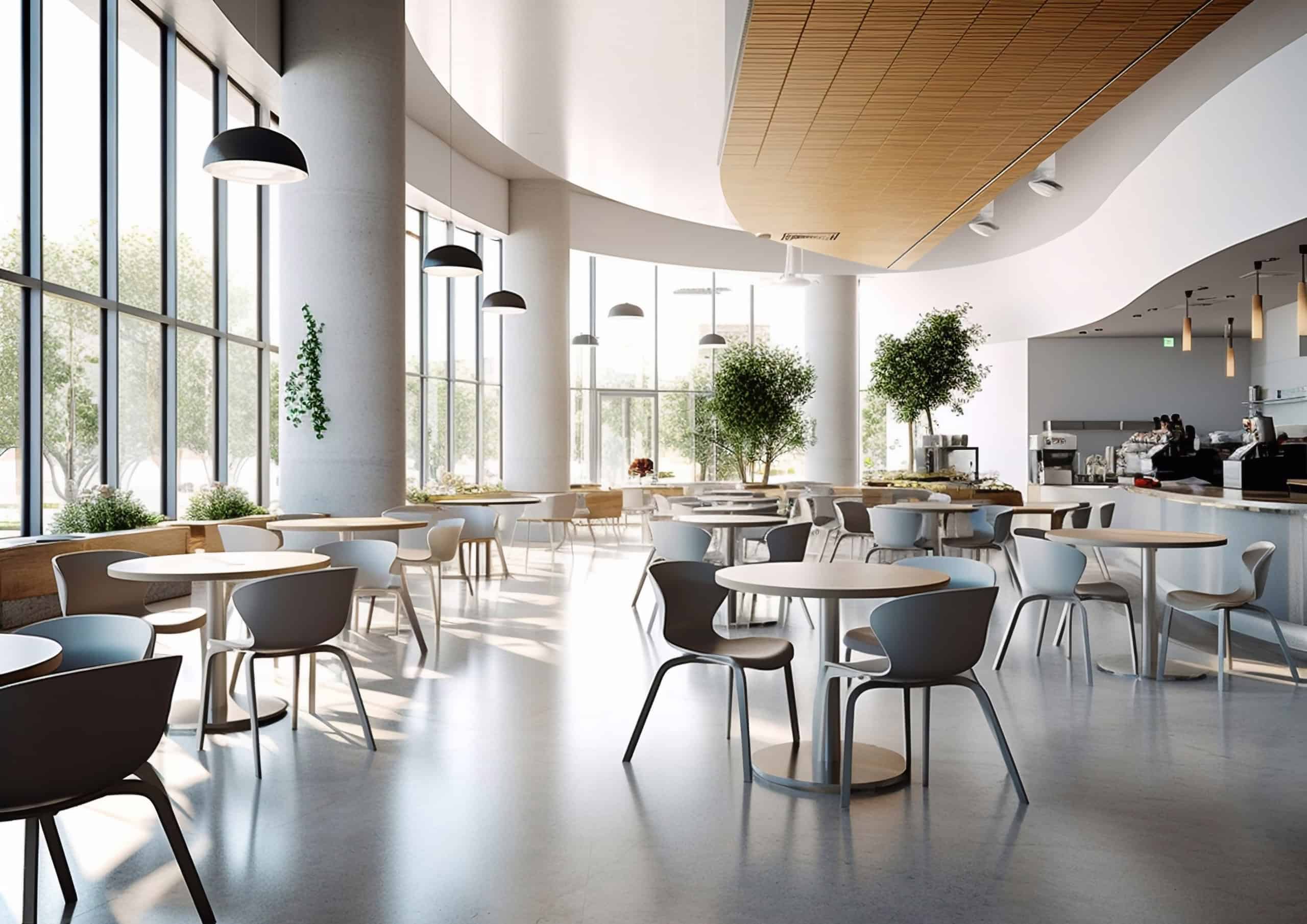
Repurpose Conference Rooms
Many businesses have found that the traditional large conference room is underutilized and outdated in the hybrid office environment. That valuable space is needed for other things, like more huddle rooms and privacy pods. Repurposing a conference room can better optimize an office floor plan.
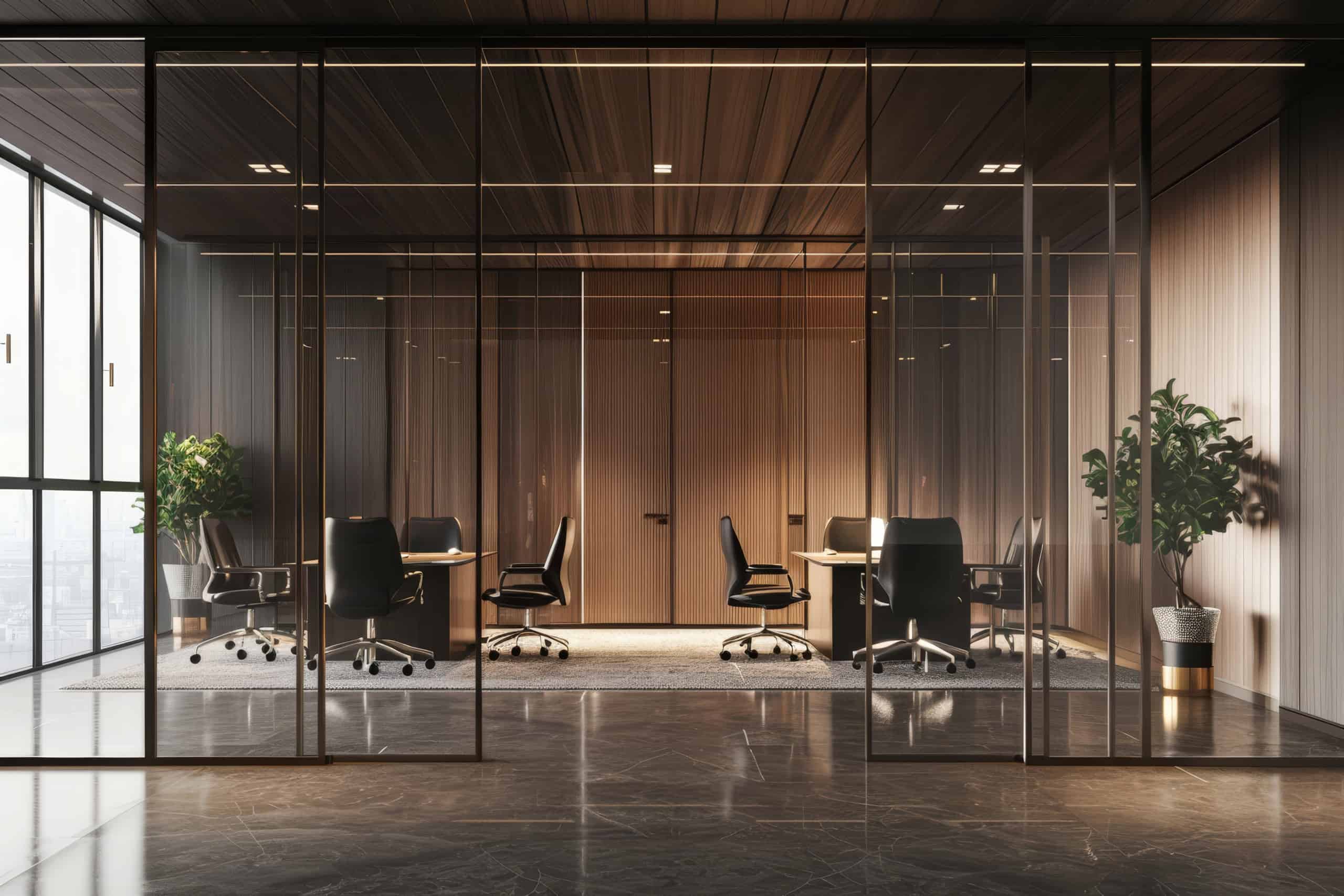
The office design must have the right balance in order for employees to want to go there and collaborate with coworkers. Create a work environment that is appealing to employees, one that has a homey feel. Resimercial furniture can accomplish these goals. Listed below are the steps outlining how the design process works at JCI.
Office Design & Furniture Consulting Process

Consultation Call
To get started, schedule a conference call with one of our design teams to discuss your office project needs. The primary focus of the call is to outline your design goals and objectives and establish a budget.

Draft a Proposal
With your project needs in mind, our design team will write up a proposal for working together that will outline the fee structure and present a big-picture understanding of your project roadmap.

Know the Rules and Laws
There are many rules, laws, and regulations to consider, based on the building, city, and state in which you are located. Our design team is experienced in these areas. They know what to look for and what questions to ask in order to ensure that your project is in compliance and avoid any future issues.

Project-Management Plan
Next, our design team will assess the timeline and budget against your office design and furniture goals, employee needs, and other important considerations. This assessment produces timelines that will be used to monitor progress throughout the project, keeping it on schedule and within budget.

Site Measurements and Preferences
Whether or not a CAD drawing has been supplied, our design team will come to your office and field-measure your space. Architectural plans are often inaccurate; at the very least, they must be verified. This is necessary step in preparing the floor plan and furniture layout.

Create a Floor Plan
Based on design and furniture needs, a floor plan is drafted next. Both 2-D (floor plan) and 3-D visuals should be provided to help you visualize the newly designed space. Any necessary changes will generate revised 2D and 3D visuals.

Furniture Selection
Next is the furniture-selection process. Your design team will ensure that employee needs, the budget, and the floor plan are all considered in choosing the right furniture.

Final Quote
After all decisions are made about furnishings and finishes, a final quote for the furniture and installation will be provided. Once the quote has been accepted, your order is placed and a tentative installation date is set, accommodating your schedule as much as possible.

Installation
Almost at the finish line! If your design team has done his or her job well, you are on budget and on schedule and have avoided major challenges. As part of the project-management process, the consultant will ensure that the installation follows all building and government codes and passes any inspections.

Conduct a Final Walk-Through
Once the project is complete, your design team will conduct a final walk-through to confirm that all of the furniture has been installed and that everyone is happy. Take some pictures of a job well done!

